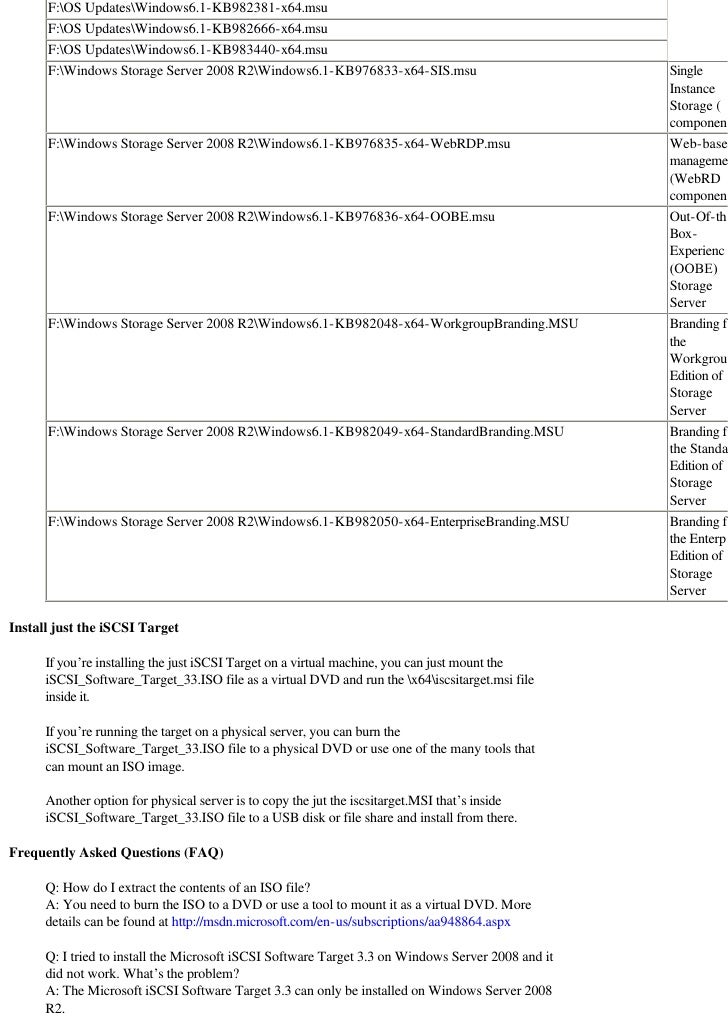Windows Server 2008 R2 X86 Download Portugues Isolation
Welcome back folks! It’s Day Eight. We’re just over one-third of the way through our series and there are only two more weeks until launch day! Raise your hand if you’ve ever had to deal with a Print Spooler crash.
Keep your hand up if the problem was caused by a faulty driver. Keep it up if you’ve ever wished that there was a way to isolate bad drivers. OK – that’s almost all of you.


Microsoft Windows Server 2008 R2 64-Bit features new virtualization tools, Web resources, management enhancements, and exciting Windows 7 integration help save. Download Windows Server 2008 32 Bit + Crack (Original) Torrent - KickassTorrents. Torrents Torrent Downloads TORRENT NAME Windows Server 2008 64 Bit R2.
Kindly provide me a link to download WIndows Server 2008 R2 X86 Enterprise.ISOor WIndows Server 2008 R2 X86 Enterprise SP1.ISO. Thanks in advance:). Oct 04, 2017 Kindly provide me a link to download WIndows Server 2008 R2 X86 Enterprise.ISOor WIndows Server 2008 R2 X86 Enterprise SP1.ISO.
Print Driver Isolation is going to make your lives a little easier! Believe me when I tell you that our Support Engineers are as excited about this feature as you are. So what is Print Driver Isolation? As the name implies, this feature allows some of the print driver components to be executed in a process (or processes) separate from the print spooler. By doing this, any problems associated with faulty drivers are isolated from the print spooler service and will not cause it to fail.
For those of you that have been around since the Windows NT days, I’m sure you remember how a bad print driver could bugcheck the system. Back then it was because print drivers were kernel-mode (Version 2) drivers. With the move to user-mode (Version 3) drivers, bad print drivers only affected the spooler, and didn’t bring down the whole system. With PDI, we’re taking this a step further – the isolated print drivers that are faulty affect well, themselves. They don’t take down the entire printing system. All kidding aside though, there are clearly benefits that PDI brings to the table.
Aside from the overall print system stability improvements, PDI provides a means to isolate new drivers for testing / debugging without affecting the spooler and also makes it easier to identify which drivers have been causing crashes. One quick caveat here – Print Driver Isolation only isolates print driver components from the print spooler. If an application loads a print driver into its own process space, and that driver crashes, then it is possible that the application might also crash. Before we get into the workings of Print Driver Isolation, it helps if you have a good grasp of printing architecture. If you need a refresher, take a look at our from a couple of years ago. OK, back to PDI.
There are three basic modes of isolation that can be configured for individual print drivers: • None – in this mode, print driver components are loaded into the spooler process. This is essentially the model found in previous versions of Windows • Shared – multiple drivers that are set for isolation are loaded into a single shared process space that is separate from the spooler process. Turbo C By Robert Lafore Free Download there.
Although this protects the spooler process, the drivers that are in shared mode can affect one another • Isolated – each driver is loaded into its own process space. This protects the spooler from individual driver failures, and also protects drivers from each other Remember that the modes are configured on a per-driver and not a per-system basis. One other point to keep in mind – not all drivers will run in shared or isolated mode. Drivers that call spooler functions or a printer’s configuration module directly will need to run in “none” mode. The driver developer can advertise whether or not their driver supports isolation mode. Now lets take a look at how the new model works. Anytime shared or isolated mode is used for a print driver, a new process – PrintIsolationHost.exe – is launched by the DCOM Server Process Launcher for each “print sandbox”.